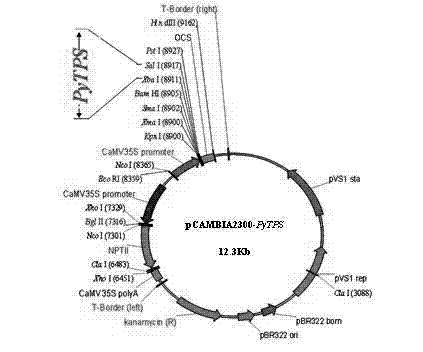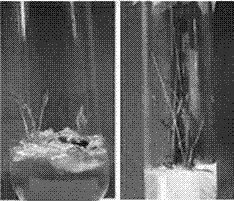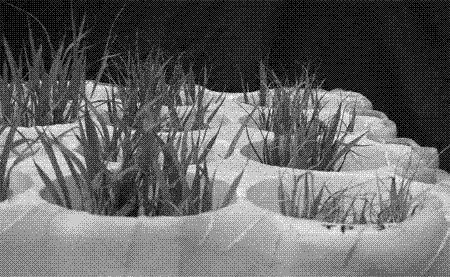Porphyra yezoensis ueda TPS (trehalose-6-phosphate synthase) gene and application thereof in enhancing salt tolerance of rice
A technology of seaweed and salt tolerance, applied in the directions of application, genetic engineering, plant genetic improvement, etc., can solve the problems of poor salt tolerance and no simultaneous problems, and achieve the effect of effective transformation system and improved salt tolerance.
- Summary
- Abstract
- Description
- Claims
- Application Information
AI Technical Summary
Problems solved by technology
Method used
Image
Examples
Embodiment 1
[0043] 1. Experimental materials
[0044] 1. Genes, strains and rice varieties
[0045] The present invention has cloned Porphyra versicolor 6-phosphate trehalose synthase (TPS) gene (PyTPS), Escherichia coli DH5α and Agrobacterium tumefaciens strain AGL1 are preserved by the Laboratory of Genetics Laboratory of Qingdao Agricultural University, and the recipient material of the transgene is rice (Oryza sativa L.) variety "Taipei 309" (TP309) (provided by Hunan Hybrid Rice Research Center).
[0046] 2. Plant medium
[0047] There are six media used in rice transformation:
[0048] 1) Callus induction medium: MS+2,4-D 2mg / L+CH 0.3g / L+proline 2.8g / L+sucrose 45g / L+phytage 3.0g / L, pH5.8;
[0049] 2) Callus subculture medium: MS+2,4-D 2mg / L+CH 0.3g / L+proline 0.5g / L+sucrose 30g / L+phytage 3.0g / L, pH 5.8;
[0050] 3) Co-cultivation medium: CC+AS 20mg / L+CH 1g / L+proline 0.5g / L+KT0.8mg / L+NAA 0.2mg / L+maltose 25mg / L+phytage 3.0g / L, pH 5.2 ;
[0051] 4) Screening medium: CC+2,4-D 2mg / L...
PUM
 Login to View More
Login to View More Abstract
Description
Claims
Application Information
 Login to View More
Login to View More - R&D
- Intellectual Property
- Life Sciences
- Materials
- Tech Scout
- Unparalleled Data Quality
- Higher Quality Content
- 60% Fewer Hallucinations
Browse by: Latest US Patents, China's latest patents, Technical Efficacy Thesaurus, Application Domain, Technology Topic, Popular Technical Reports.
© 2025 PatSnap. All rights reserved.Legal|Privacy policy|Modern Slavery Act Transparency Statement|Sitemap|About US| Contact US: help@patsnap.com



